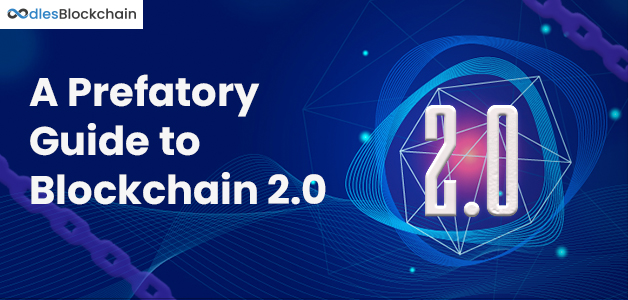-
Blockchain is best recognized as a complex and somewhat enigmatic technology that enables the online exchange of cryptocurrencies without the aid of banks or other middlemen. But in recent years, blockchain app development has also been marketed as the answer to a variety of corporate problems, including supply-chain monitoring, fraud control, and identity verification. Despite all the hoopla, though, business applications for blockchain are still largely hypothetical. A few early adopters in the retail and other industries are investigating blockchain-based business applications for supply-chain management and other procedures, while the majority are hesitant to move forward due to high costs, ambiguous returns, and technological challenges.
But it's possible that Blockchain 2.0 and 1.0 are at a transition point at this time. Blockchain business applications with the ability to boost productivity and cut costs will certainly overtake blockchain-enabled cryptocurrency applications in the new era.
What is Blockchain 2.0?
With extra scalable on-chain usefulness and expandable features, the blockchain is referred to as "blockchain 2.0" to distinguish it from Bitcoin as an asset and from the blockchain as a programmed distributed trust infrastructure in general. Blockchain 2.0 expands this technology's capabilities to enable the decentralization of markets more generally, enabling the exchange of other types of assets like certificates, rights, and responsibilities in real estate, intellectual property, cars, and artworks. This shifts the focus away from the decentralization of money and payments.
These codes can be a component of an entry in a blockchain 2.0 application. Smart contracts between parties who have never met may now enter into agreements without concern because of the amount of confidence ingrained in the blockchain as a database that cannot be faked or altered.
Also, Read: Blockchain Technology Integration for Business Intelligence
Difference between Blockchain 1.0 and Blockchain 2.0
Blockchain version 1.0: Cryptocurrency
The first and most obvious application of distributed ledger technology (DLT) is cryptocurrency. This enables the execution of financial transactions based on blockchain technology or DLT, which are frequently used interchangeably for the sake of simplicity. The most notable example in this area is Bitcoin. It serves as a digital payment system, "currency for the Internet," and is sometimes referred to as the "Internet of Money."
Blockchain 2.0: Emergence of Smart Contracts
Smart Contracts, which are little computer programs that "live" on the blockchain, are the new central idea. They are self-sufficient computer programs that run automatically under predetermined conditions, such as the facilitation, verification, or enforcement of contract fulfillment. One significant benefit of this technology is that Smart Contracts cannot be altered or compromised thanks to the blockchain. Therefore, smart contracts enable transparent contract definition, which solves the moral hazard issue, while also lowering the cost of verification, execution, arbitration, and fraud prevention.
The Ethereum Blockchain, which aims to enable the development of Smart Contracts, is the most well-known in this area.
Also, Read | What is Blockchain Technology and How Does it work
Top 5 Benefits of Blockchain 2.0
Blockchains from the first generation have issues, such as subpar performance, difficult deployments, and a lack of cloud integration. However, a lot of their goals were valid and still stand today:
SaaS-focused and Serverless
Software-as-a-service (SaaS) delivery of new blockchains frequently eliminates the need to manually build, secure, maintain, and pay for infrastructure scaled to maximum capacity as a requirement. Simple, standards-based schemas serve as the basis for deployments.
Dynamic Data Models
All data, from a single Boolean value to multi-gigabyte files, are kept "on-chain" by next-generation blockchains without sacrificing ACID transactional support. They can also use standards-based schema languages to provide customized, tightly typed APIs that facilitate the development and integration of applications.
High-Performing
Next-generation blockchains feature safe ACID semantics that makes it simple to develop data-centric applications and can scale to tens of thousands of transactions per second, allowing more scalability without turning to "off-chain" issues.
Also, Read | Finding Out If Your Business Needs Blockchain Technology
Centered on Security and Privacy
Using straightforward permission mechanisms, new blockchains and distributed ledgers provide out-of-the-box solutions for data privacy, making it simple for data producers to control who can read or alter their data and files. The use of already-adopted systems can be made simple for blockchain node owners by authentication and authorization services.
Energy and Cost-Efficient
The environmental impact of proof of work systems and the up-front costs for some projects are both minimized by new implementations, which also take energy and financial considerations into account. Instead of expensive "scale-to-peak" deployments, serverless designs can make it possible to employ computation and networking resources.
Cloud and Enterprise-friendly
Blockchain 2.0 may quickly connect to typical forms of data ingress and egress with no-code configuration-driven solutions by interacting easily with public cloud services. They follow regulatory and assurance initiatives and are business-friendly.
Also, Read | Implementing Blockchain Technology Into Your Business Without Spending A Fortune
Conclusion
For businesses, blockchains' fundamental objectives are still quite alluring. Enterprises are now finally benefiting from scalable, secure data-sharing platforms thanks to technologies that can truly make such claims true. Want to get started with blockchain development? Connect with our blockchain development experts for more information.

Our Offices
INDIA
Emaar Digital Greens, Sector 61,
Gurugram, Haryana
122011.
Welldone Tech Park,
Sector 48, Sohna road,
Gurugram, Haryana
122018.














